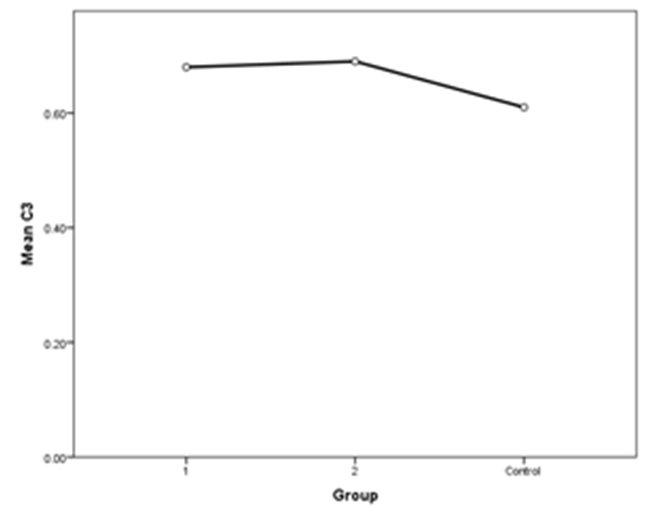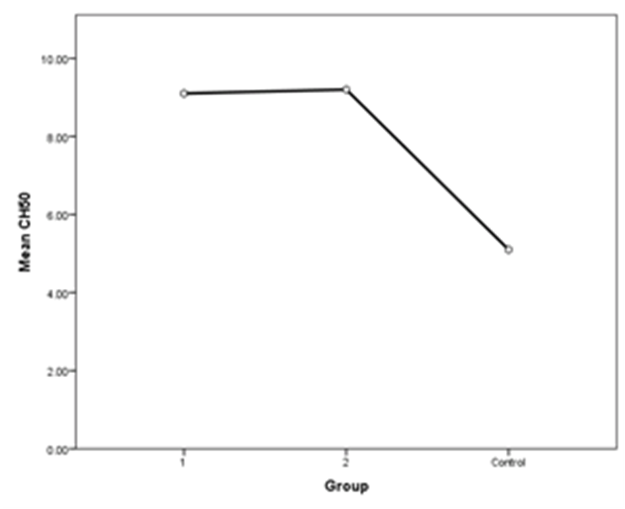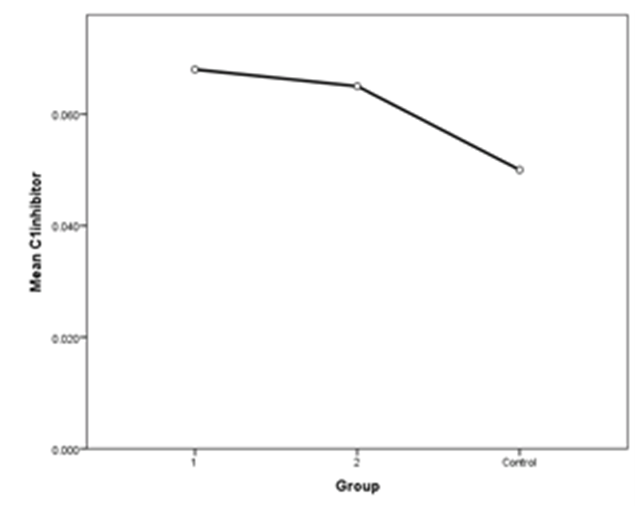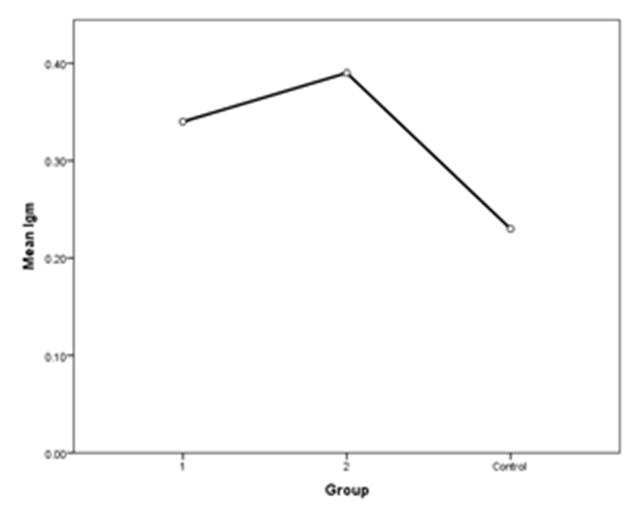-
Paper Information
- Paper Submission
-
Journal Information
- About This Journal
- Editorial Board
- Current Issue
- Archive
- Author Guidelines
- Contact Us
International Journal of Agriculture and Forestry
p-ISSN: 2165-882X e-ISSN: 2165-8846
2014; 4(3): 207-210
doi:10.5923/j.ijaf.20140403.10
Study Effect of Satureja bachtiarica Alcoholic Extract on Some Components of Complement System and IgM in Rat Serum
Meysam Khodadadi 1, Hamed Soleyman Dehkordi 1, 2, Hamid Iranpour Mobarakeh 1, Faham Khamesipour 2, Mohsen Jafarian Dehkordi 3
1Faculty of Veterinary Medicine, Shahrekord Branch, Islamic Azad University, Shahrekord, Iran
2Young Researchers and Elite Club, Shahrekord Branch, Islamic Azad University, Shahrekord, Iran
3Department of Pathology, Faculty of Veterinary Medicine, Islamic Azad University, Shahrekord Branch, Shahrekord, Iran
Correspondence to: Faham Khamesipour , Young Researchers and Elite Club, Shahrekord Branch, Islamic Azad University, Shahrekord, Iran.
| Email: |  |
Copyright © 2014 Scientific & Academic Publishing. All Rights Reserved.
This plant is antioxidant, Carminative, Astringent, Fungicide, mucolytic, antibacterial, strong stomach tonic and Anthelmintic. With regard to valuable properties of Satureja bachtiarica plant, we decided to investigate effects of Satureja bachtiarica alcoholic extract on some components of complement system (C1inhibitor, CH50, C3 and C4) and serum IgM in rat. In this study Satureja bachtiarica extract at concentrations of 200 and 400mg/kg was given to animals in two treatment groups for 30 days and the third group as whiteness received no compound. In this study after measuring components of complement system and IgM a relative increase was observed in the amount of complement system components and IgM compared to the control group.
Keywords: Satureja bachtiarica L., Complement system, Serum, IgM, Rats
Cite this paper: Meysam Khodadadi , Hamed Soleyman Dehkordi , Hamid Iranpour Mobarakeh , Faham Khamesipour , Mohsen Jafarian Dehkordi , Study Effect of Satureja bachtiarica Alcoholic Extract on Some Components of Complement System and IgM in Rat Serum, International Journal of Agriculture and Forestry, Vol. 4 No. 3, 2014, pp. 207-210. doi: 10.5923/j.ijaf.20140403.10.
Article Outline
1. Introduction
- Satureja is a plant of dicotyledons class and lamiacea family, herbaceous, annual and its height reaches up to 10-30 cm. Stems are distributed with a grayish-green appearance and leaves are long, narrow, linear and sharp with their surfaces having numerous fine points containing essence. This plant is distributed in west Iran (Azerbaijan) and north Iran (Firouzkouh) regions (Rechinger, 1982). Satureja has tannin, fatty substances, different sugars and essence about 20% and its color is yellow or bright brown (Lawrence, 1981). Also this plant has compounds named carvacrol and parasimen. According to Lawrence book, the value of Satureja essence is due to carvacrol amount and phenolic aromatic substances as fresh that is reminder of Zataria multiflora and Origanum majorana (Lawrence, 1978; Iranpour Mobarakeh et al., 2014). Its essence is an effective anti-diuretic that is due to presence of carvacrol at concentration of 35-40% in wild plant and 65% in cultivable plants (Soodi et al., 2012; Iranpour Mobarakeh et al., 2014). Leaves contain uric acid and there is 272 calories, 9 g water, 6.7g protein, 5.9 g fat, 68.7 g carbohydrates, 140 mg phosphorus 2.32 mg calcium and 37.9 mg iron in each 100g of dried Satureja (Duke, 1981). Extract of this plant is gargled to decrease tonsils hyperemia (Abdollahi et al., 2003; Zareii et al., 2014). In cases of neuralgia and rheumatic pains, this plant is also used in therapeutic baths to reduce pain (Iranpour Mobarakeh et al., 2014; Sharafzadeh, 2014). Also massaging vertebral column with plant creams containing extract of this plant accompanied by foot baths and vaginal steaming is very effective to reduce orgasmic dysfunction in women (Lewis and Elvin-Lemis, 1977). Satureja is useful to treat diarrhea and its pomade with olive oil is useful for different types of abdominal cramps (Yousefzadi et al., 2013; Iranpour Mobarakeh et al., 2014). This plant also has antioxidant, antidiabetic, antibacterial and anticoagulant property and reduces weight and triglyceride (Nazari et al., 2006). Satureja is used in treatment of runny nose, colic, otitis, sclerosis and spasms (Duke and Wain, 1981). In this research, we investigated the effects of the Satureja bachtiarica alcoholic extract on some components of complement system such as (C3, C₄, CH50 and C₁ inhibitor) and IgM in rat serum.
2. Material and Methods
- This study was conducted in 2013 in the Islamic Azad University of Shahrekord Branch laboratory. Some components of the complement system (C3-C4-CH50-C1inhibitor) and IgM were measured in Al-Mahdi Medical Diagnostic Laboratories of Shahrekord, Iran. Sample of Satureja bachtiarica plant leaves were collected and alcoholic extract of the mentioned plant was prepared in the laboratory. Drying and extracting Satureja bachtiarica was prepared from medicinal plant research center. After cutting extraction of the plant extract was performed by using Alcoholic distillation method by the rotary device (Biritish pharmacopeia, 1988).
2.1. Animals
- In this research 30 female white wistar rats prepared from laboratory animals breeding center of university laboratory with weight range of 215±15 g, were maintained in standard cages and had access to food and water. According to ethical code available in university and by considering ethical issues relating to animals, the study tried to avoid any case including annoyance, unnecessary use of animals or even losses during the testing. Rats were divided into three classes of ten and then extract dose was determined through preliminary experiments in groups 1 and 2 and the control group received no compound (Hartwell, 1971). The group 1 and the group 2 received respectively 200mg/kg and 400mg/kg of Satureja bachtiarica alcoholic extract and the control group received no compound. Prescription of extract in groups continued for 30 days and after completion of this period animals were anesthetized intraperitoneally with 100mg/kg of Ketamin hydrochloride and 16 mg/kg of 2% xylazine. Blood sample was collected by the Cardiac Puncture Technique (Sumiko et al., 2001). Then its serum was separated by centrifugation at 200 rpm for (time) and components of complement system and IgM were measured. All experiments were carried out under ethical guidelines of the Islamic Azad University of Shahrekord Branch, for the care and use of laboratory animals.
2.2. Statistical Analysis
- Findings were statistically analyzed by means of SPSS software 18.0 (SPSS Inc., Chicago, IL, USA) and significance levels (p□0.05) were compared by means of Duncan tests.
3. Results
- The amount of serum C3, C₄, CH50, C₁inhibitor and IgM in the groups are shown in Table 1. The amount of serum C3 in group one was 0.68±0.15 mg/dI and did not show significant differences to the control group (0. 61±0.59 mg/dI) but showed a relative increase (p>0.05). The amount of serum C3 in group two was 0.69±0.25 mg/dl and showed a relative increase to the control group (p>0.05) (Figure 1).
 | Table 1. The Satureja bachtiarica alcoholic extract effect on some components of complement system and IgM in rat serum |
 | Figure 1. The effect of Satureja bachtiarica alcoholic extract level of C3 of rat blood serum |
 | Figure 2. The effect of Satureja bachtiarica alcoholic extract level of C₄ of rat blood serum |
 | Figure 3. The effect of Satureja bachtiarica alcoholic extract level of CH50 of rat blood serum |
 | Figure 4. The effect of Satureja bachtiarica alcoholic extract level of C₁ inhibitor of rat blood serum |
 | Figure 5. The effect of Satureja bachtiarica alcoholic extract level of IgM of rat blood serum |
4. Discussion
- This study was conducted to investigate the effect of Satureja bachtiarica alcoholic extract on some components of complement system and IgM in rat serum. In the study by Sturkie (1995), conducted to test the effect of medicinal plants on immunity surface of hen’s body, using urtica dioica as combined with Satureja increases lymphocytes percent and decreases heterophils percent that indicates positive effect of this plant on enhancement of body immune system. Lymphocytes have role in cell-mediated immunity. Cell-mediated immunity involves increase in delayed hypersensitivity, Graft-versus-host, defense against intracellular organisms (like Bacillus and Brucella) and possibly defense against neoplasms and also plays role in humoral immunity with production of antibodies (Sturkie, 1995). With regard to spherocytosis property of complement system and delivering antigen to lymphocytes and phagocyting cells (Male et al., 2006) increase in amount of complement factors can increases antigens spherocytes and increase in phagocytosis and also better identification of antigens delivered by adaptive immunity and antibody production against them.In present study Satureja extract created a relative increase in all measured components of complement system and IgM compared to control group. Regarding to the stated contents this relative increase can create increase in lymphatic immune system performance and phagocytes and overally cascade of immune system performance.To the obtained results by Iranpour Mobarakeh et al. (2014), Savory (Satureja Hortensis L.) plant can lead to increase blood serum proteins (Iranpour Mobarakeh et al., 2014). In another study, it was demonstrated that Satureja khuzistanica essential oil has significant anti-microbial activity. In addition, a cytotoxic effect of the oil against cancerous cell lines was noted (Yousefzadi et al., 2013).Thomke and Elwinger (1998) also presented a report about different properties of Satureja plant including liver performance increase (Thomke and Elwinger, 1998). With regard to this report and the fact that complement system factors are created in liver it can be concluded that increase in liver performance can create increase in amount of complement system protein that in present study we observed a relative increase in complement system components.Antioxidant property has been reported as another property of this plant (Radonic and Milos, 2003). Radical oxygen and nitrogen are continually produced in human body and are controlled by inner enzymes (superoxide decmotaz, catalysis, Glutathione peroxidase). When these radicals are produced excessively substrates are exposed to oxidation, body defense mechanisms become disable and biomolecules (DNA, lipid, protein) are destroyed (Oke et al., 2009).
5. Conclusions
- With regard to antioxidant property of Satureja, it can be said that this plant increases immunity activity in the body.
 Abstract
Abstract Reference
Reference Full-Text PDF
Full-Text PDF Full-text HTML
Full-text HTML